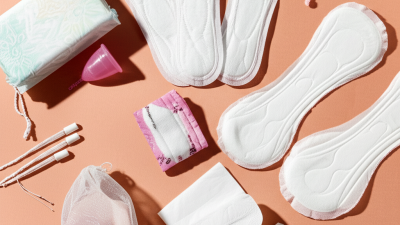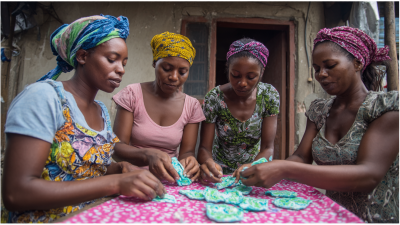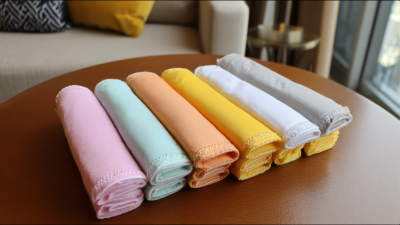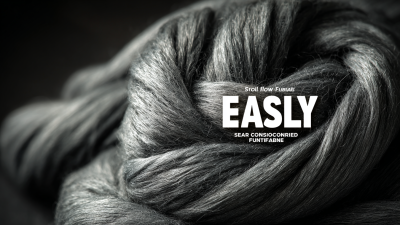
How to Choose the Right Menstrual Materials for a Comfortable Experience
Choosing the right menstrual materials is crucial for ensuring a comfortable and confident experience during menstruation. According to recent studies, roughly 80% of women report experiencing discomfort due to unsuitable menstrual products, which can lead to feelings of unease and distraction throughout their daily activities. The menstrual care market, valued at approximately $22 billion globally in 2021, is witnessing a significant shift towards sustainable and health-conscious products, with 54% of consumers indicating a preference for eco-friendly options. As society becomes more aware of the impact of chemical additives in conventional menstrual materials, the demand for organic and reusable alternatives continues to rise. This blog will guide you through the diverse types of menstrual materials available, helping you make informed choices that align with your comfort, health, and environmental values.

Understanding Different Types of Menstrual Materials: Pros and Cons
When it comes to menstrual materials, understanding the pros and cons of each option is essential for a comfortable experience. Pads, for instance, are widely used for their convenience and ease of use. They come in various thicknesses and absorbency levels, catering to different flow rates. However, some may find disposable pads uncomfortable due to their synthetic materials, which can lead to irritation for sensitive skin.
On the other hand, menstrual cups are gaining popularity for their eco-friendliness and cost-effectiveness. They are reusable, which not only reduces waste but also saves money in the long run. While they can initially be challenging to use, many women find them comfortable once they get the hang of it. One tip for first-time users is to start with a smaller size to ease the transition.
Cloth pads are another alternative, providing a soft feel against the skin. They are washable and reusable, making them a sustainable choice. However, they require a bit more maintenance, as proper cleaning is essential to prevent odors and stains. If you choose cloth pads, consider having enough on hand to rotate throughout your cycle. Exploring these options thoroughly can help you find the best fit for your needs.
Factors to Consider When Choosing Menstrual Products for Comfort
When selecting menstrual products, comfort is paramount. One of the primary factors to consider is absorbency. Determine your flow type—light, moderate, or heavy—and choose products that correspond to your needs. Pads, tampons, menstrual cups, and period underwear come in various absorbencies, so it's essential to find the right match for your cycle to prevent leaks and discomfort.
Another critical consideration is material. Opt for products made from breathable, natural materials if you have sensitive skin. Organic cotton pads or menstrual cups can significantly reduce irritation and provide a more comfortable experience. Additionally, be mindful of the pH level of products to prevent infections and maintain vaginal health.
Moreover, don’t overlook personal lifestyle factors. If you’re active, consider using menstrual cups or period panties that stay in place during rigorous activities. If convenience and disposal are crucial, eco-friendly disposable pads might suit you better. Experimenting with different products will help you find the perfect combination that keeps you comfortable throughout your menstrual cycle.
Eco-Friendly Options: Sustainable Menstrual Materials to Consider
When it comes to menstruation, choosing eco-friendly materials is not just better for the environment but can also enhance your overall comfort. Traditional sanitary products, such as pads and tampons, often contain synthetic materials and chemicals, which can irritate the skin and contribute to landfill waste.
Instead, consider sustainable menstrual options like reusable cloth pads, menstrual cups, and period underwear. These alternatives are not only made from natural or biodegradable materials but also provide long-term savings and reduced environmental impact.
Reusable cloth pads are made from soft fabrics and can be washed and used for years, significantly reducing waste. Menstrual cups, often made from medical-grade silicone or rubber, collect menstrual fluid rather than absorbing it, which can lead to a more comfortable experience. Additionally, period underwear is designed to be absorbent and leak-proof, providing a hassle-free solution for those who prefer an all-in-one approach.
By making mindful choices about menstrual materials, you can enjoy a more comfortable experience while also taking a positive step toward sustainability.
Allergies and Sensitivities: Finding Safe Menstrual Products for Your Body
When it comes to menstrual products, the choice can be overwhelming, especially for those with allergies or sensitivities. According to a report by the American Academy of Dermatology, nearly 47% of women experience some form of skin irritation related to menstrual products. Many traditional options, like conventional pads and tampons, contain synthetic materials and fragrances that can exacerbate these issues. For individuals prone to allergies, selecting products made from organic cotton or natural materials can significantly reduce the risk of irritation.
Moreover, research from the Journal of Women's Health indicates that 15% of women report allergic reactions due to common menstrual product ingredients, such as latex and certain dyes. To avoid these reactions, it's vital to choose hypoallergenic products that clearly state they are free from irritating substances. Brands increasingly offer certified organic and hypoallergenic options, making it easier for consumers to find safe and comfortable menstrual materials. Prioritizing ingredient transparency not only ensures a more comfortable experience but also promotes overall health during menstruation.
How to Choose the Right Menstrual Materials for a Comfortable Experience
| Product Type | Material | Sensitivity Level | Eco-Friendliness | Cost Range |
|---|---|---|---|---|
| Cotton Pads | 100% Organic Cotton | Low | High | $0.30 - $0.80 each |
| Disposable Pads | Synthetic Materials | Medium | Low | $0.10 - $0.50 each |
| Menstrual Cups | Medical-Grade Silicone | Low | High | $20 - $40 each |
| Cloth Pads | Cotton & Bamboo | Very Low | High | $5 - $25 each |
| Period Underwear | Cotton & Polyester | Medium | Medium | $15 - $40 each |
Adapting Your Choice: How Lifestyle and Activity Level Affect Material Selection
When selecting menstrual materials, it's essential to consider how your lifestyle and activity level influence your choices. Recent studies indicate that about 30% of menstruators engage in high-intensity activities, such as running or aerobics, during their cycles. For these individuals, materials that offer superior absorbency and secure fit are crucial. Brands like Thinx and Always recently reported an increase in demand for sports-oriented menstrual products, reflecting the needs of active users seeking reliable performance without compromising on comfort.
On the other hand, those who lead a more sedentary lifestyle may prioritize eco-friendliness and comfort over high absorbency. According to a 2022 report by the Menstrual Health Coalition, reusable options like cloth pads and menstrual cups have gained traction among consumers looking for sustainable choices. Approximately 45% of users of these products cite comfort and reduced waste as primary motivators for their selection. Understanding how your daily routine and physical engagement shape your preferences can lead to a more satisfying menstrual experience tailored to your specific needs.
Related Posts
-

Innovative Solutions for Eco-Friendly Menstrual Care: Best Washing Reusable Sanitary Pads Fiber
-

How to Choose the Best Plastic Free Sanitary Pads for Your Eco Friendly Lifestyle
-

5 Essential Menstrual Materials You Didn't Know You Needed for Ultimate Comfort
-

7 Best Uses of Psf Fiber in the Textile Industry for Enhanced Durability
-

Ultimate Checklist for Choosing Sustainable Sanitary Pads: Key Considerations and Statistics
-

7 Reasons Why Best Hollow Conjugated Fiber is the Future of Sustainable Textiles



